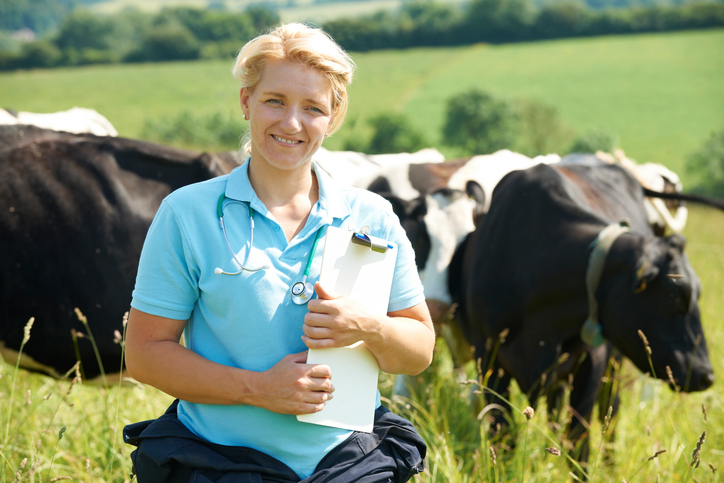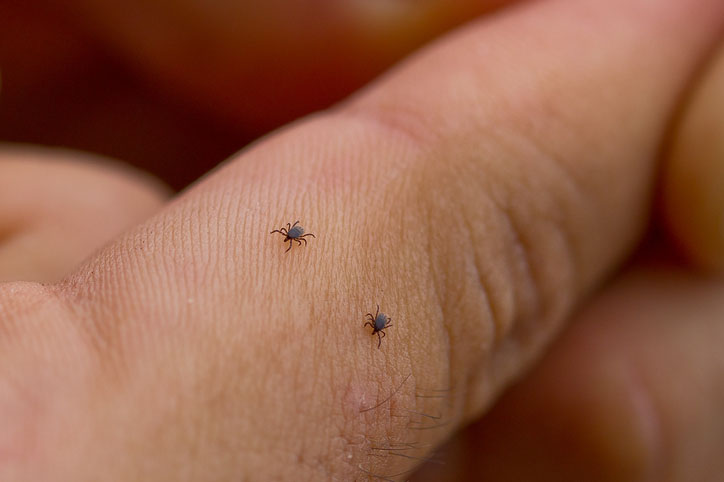Breeding Soundness Examination of Small Animals
- Management of Reproduction: Small Animals
- Breeding Soundness Examination of Small Animals
- Breeding Management of Small Animals
- Manipulation of the Estrous Cycle in Small Animals
- Pregnancy Determination in Small Animals
- Prevention or Termination of Pregnancy in Small Animals
- Whelping and Queening
- Labor and Delivery in Small Animals
- Postpartum Care in Small Animals
- Periparturient Problems in Small Animals
- Infertility in Small Animals
Female:
The breeding soundness examination should begin with a thorough reproductive and medical history, including information on previous cycles (onset and regularity), breeding management (past and intended), outcome of any breeding(s), and relevant family history, as well as routine medical information (diet, medications, environment, health status). A thorough physical examination, with particular attention given to the genitalia and mammary glands, should be performed. Vestibulovaginal defects (strictures) should be excluded by digital examination. Evaluation of the mammary glands should include inspection of the nipples for normal anatomy. Screening for hereditary defects common to the breed should be advised, which may require techniques such as radiography (eg, elbow dysplasia), ultrasonography (eg, renal dysplasia), ophthalmoscopy (eg, cataract), specific DNA testing (eg, progressive rod-cone degeneration), as well as the physical examination (eg, patellar luxation).
Digital vaginal examination and vaginoscopy of the bitch may detect strictures or other defects of the vulva or vagina that may hinder copulation or whelping. Vaginal strictures are more commonly congenital than acquired and may be in the form of either a septate strand or a circumferential band. They most commonly form at the vestibulovaginal junction, cranial to the urethral papilla. The heritability of such defects is unknown. Strictures of the vagina or vestibule are not uncommon in the bitch and usually prevent normal copulation, but if pregnancy ensues from mating without a tie or from artificial insemination, dystocia can result. Septate strands can be easily resected surgically, but circumferential strictures are difficult to resolve without episiotomy and major revision, and tend to reform. Elective artificial insemination and cesarean section may be preferable if the bitch has outstanding breeding potential.
Routine vaginal cultures are not advised because the vagina normally harbors a wide variety of bacteria, including β-hemolytic streptococci and Mycoplasma spp. Bitches should be screened for brucellosis before each estrus when breeding is planned. A negative Brucella canis screening test is reliable; positive results warrant further specific (eg, agar gel immunodiffusion [AGID]) serologic evaluation, culture, or PCR, because false-positives are common. Clinicians should contact their commercial laboratory or veterinary school for updated screening protocols. Queens should be screened for feline leukemia virus and feline immunodeficiency virus as medically indicated. Bitches and queens >5 yr old should also have their general health assessed by performing a CBC, serum chemistries, and a urinalysis.
Before an anticipated breeding, females should be in optimal body condition to improve conception rate and whelping outcome. Breeders commonly skip cycles between breedings; this is not optimal husbandry because the inevitable exposure to estrogen (queen) and progesterone (bitch, sometimes queen) during the estrous cycle promotes cystic endometrial hyperplasia and may result in pyometra. Bitches and queens kept in optimal health can be bred sequentially and should be ovariohysterectomized or ovariectomized when no further breedings are planned. Proper nutrition and exercise strategies for pregnancy and lactation should be outlined.
Bitches should be currently vaccinated for core infectious diseases (canine distemper, parvovirus, adenovirus 2, and rabies). Other noncore vaccinations should be administered only according to good medical practice (appropriate for the dog’s age, health status, home and travel environment, and lifestyle). Queens should similarly be vaccinated appropriately (based on duration of immunity recommendations) for feline distemper, rhinotracheitis, and calicivirus. Vaccination against rabies virus, feline leukemia virus, and other noncore diseases should be done when indicated by good medical practice, based on risk factors associated with the cat’s age and husbandry. Unnecessary revaccination of bitches and queens before breeding is not advised, because little improvement in immunity can be expected and adverse effects may be seen. Vaccination during pregnancy is advised only when prior vaccination status is lacking or unknown, and risk of exposure is high (eg, a shelter). In that case, the use of recombinant core vaccines is optimal.
The use of preventive medication for heartworm disease and internal and external parasite control (according to manufacturers’ recommendations) during pregnancy and lactation is advised. Appropriate isolation of the pregnant female during the last half of pregnancy for infectious disease prevention is important (eg, avoiding exposure to canine herpesvirus in the bitch and upper respiratory infections in the queen). Client education concerning normal whelping and queening events and about the timely identification of dystocias is essential. Fetal and uterine monitoring systems developed for routine use in the bitch and queen improve neonatal survival with reduced morbidity and mortality for the dam.
Male:
The breeding soundness examination for males should begin with a thorough reproductive and general health history, including past and intended breeding management, outcome of any breedings already performed, relevant family history, as well as routine general history (diet, medication, environment, and health status). Screening for relevant heritable defects of concern for the breed should be advised.
A thorough physical examination should be performed, with particular attention given to the genitalia. The penis should be fully extruded from the prepuce and examined. This may require sedation in toms. If hair accumulates around the base of the feline penis, it can prevent copulation and should be removed. Prostate size and symmetry should be assessed in dogs by simultaneous abdominal and rectal palpation or with ultrasonography; this is not generally necessary in cats because prostate disease is rare. Palpable abnormalities (pain or asymmetry) or semen abnormalities always warrant ultrasonographic evaluation of the prostate and further clinical testing as indicated (eg, urinalysis, cytology, culture). The testes and epididymi should be palpated carefully for symmetry and normalcy—abnormalities again warrant ultrasonographic evaluation. The scrotum should be evaluated for evidence of dermatitis or trauma, which can impact fertility. A small amount of mucoid discharge at the preputial opening is normal in dogs. (Also see Reproductive Diseases of the Male Small Animal.)
Cryptorchidism, a common genital defect in males, is diagnosed if either or both testes are not present in the scrotum at puberty; testicles normally descend into the scrotum by 6–16 wk of age. Descent as late as 10 mo has been documented in dogs. Unilateral cryptorchidism does not result in infertility. In dogs, cryptorchidism is hereditary, and affected animals should not be bred. Both late descent and failure of descent are heritable. Both parents of affected individuals should be implicated as carriers. Because retained testes have a higher incidence of neoplasia and torsion, bilateral orchiectomy is recommended. Attempts at inducing descent with medical therapy with gonadotropins or testosterone have been unsuccessful and are not ethical. Orchiopexy is also considered unethical. Failure of one testis to develop (true monorchidism) may be seen in dogs but is rare. Serum luteinizing hormone (LH) levels are high (>1 ng/mL) if a dog or cat is completely neutered.
A persistent penile frenulum prevents protrusion of the penis from the prepuce and thus copulation. Treatment is surgical. Deviation of the penis is uncommon; these animals require assistance in breeding or may be bred via artificial insemination. Hypospadias prevents normal sperm transport from the testes to the glans penis and is easily detected by physical examination. Small defects may close spontaneously, but some type of reconstructive surgery involving urethrostomy and penile amputation is usually necessary. Phimosis can be caused by stenosis of the preputial opening, which may be congenital or result from chronic inflammation (trauma or bacterial dermatitis). Any underlying cause should be treated and then, if necessary, the opening enlarged surgically.
Semen Evaluation:
Ideally, a complete semen evaluation should be performed in male dogs intended for breeding and repeated at least annually in active stud dogs. Semen is readily collected from most dogs by manual stimulation; the presence of a teaser (estrual) bitch is advised to optimize results by improving libido. All equipment (artificial vagina, collecting tubes, pipettes, slides, and coverslips) should be room to body temperature, dry, and free of water and contaminants such as chemical disinfectants. The canine ejaculate consists of three fractions—the first and third are of prostatic origin, while the second is sperm-rich. Sperm production is related to testicular size, so large dogs should produce higher sperm counts than small dogs.
Semen evaluation should include an assessment of libido, total sperm count per ejaculate (normal in dogs is 200–400+ million), sperm motility (normal >90% progressively motile, with moderate to fast speed), and morphology (>90% normal). The sperm count (sperm/mL) is usually determined with a hemocytometer or by spectrophotometry. Sperm per ejaculate is calculated by multiplying the sperm count by the volume of semen collected. Motility is evaluated in an unstained sample as soon as the sample is collected, ideally using clean slides prewarmed on a slide warmer. Several commercially available stains are suitable for morphology examination; eosin-nigrosin and Giemsa stains are used most commonly.
An adequate amount of the third fraction should be collected to ensure that the entire sperm-rich fraction has been acquired and to permit evaluation of the prostatic component, which should be clear (free of urine and cellular contamination). Subfertility or infertility should never be diagnosed based on one collection. If the sample is azoospermic, semen alkaline phosphatase can be measured in the ejaculate to assess whether the ejaculate was complete, because it is an epididymal marker. Levels >5,000 mcg/dL indicate the ejaculate included the second, normally sperm-rich fraction. Levels <5,000 mcg/dL indicate either bilateral obstructive disease or libido problems preventing the release of the second fraction. Sperm function is not assessed with routine semen evaluation. Acrosomal evaluation requires special techniques that are not usually commercially available.
Collection of semen for evaluation is difficult in toms, unless the cat has been trained to ejaculate into an artificial vagina or electroejaculation equipment is available. Cats can be trained to ejaculate with manual stimulation in some instances, but training can take weeks to months. Chemical ejaculation using urethral catheterization under dexmedetomidine sedation or by fine needle aspiration of the testes for sperm cytology has been described. Nonspecific methods of evaluating a tom for spermatogenesis include evaluation of urine for sperm and collecting a vaginal wash from the queen immediately after copulation.
Sperm disappear from the vagina within 1–2 hr of copulation. Warm saline (0.05–1 mL) is flushed into the vagina of the queen and aspirated, the sample is centrifuged, and the sediment examined (new methylene blue or routine hematologic stains are adequate). Breeding a questionable tom to a proven queen may be the most practical way to assess his fertility. Adequate coital contact to induce ovulation should be confirmed by measuring progesterone levels in the queen 1–2 wk after breeding.
Resources In This Article
- Management of Reproduction: Small Animals
- Breeding Soundness Examination of Small Animals
- Breeding Management of Small Animals
- Manipulation of the Estrous Cycle in Small Animals
- Pregnancy Determination in Small Animals
- Prevention or Termination of Pregnancy in Small Animals
- Whelping and Queening
- Labor and Delivery in Small Animals
- Postpartum Care in Small Animals
- Periparturient Problems in Small Animals
- Infertility in Small Animals





